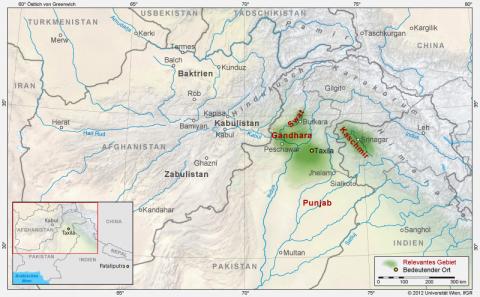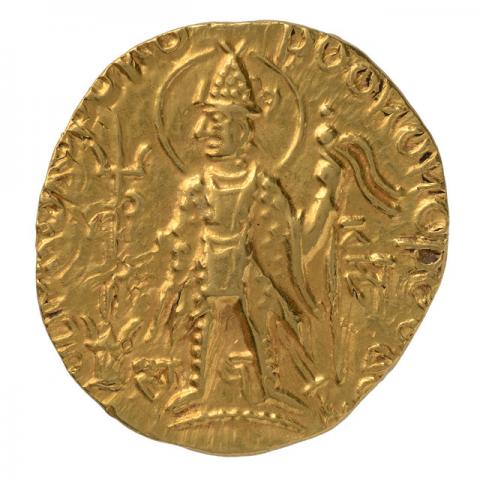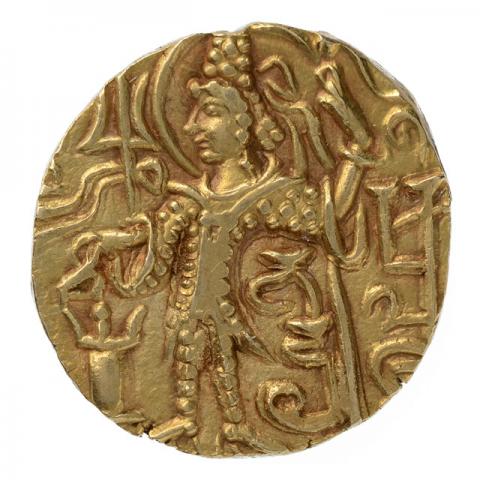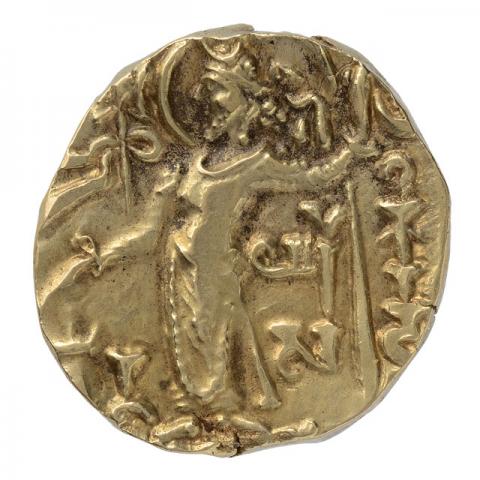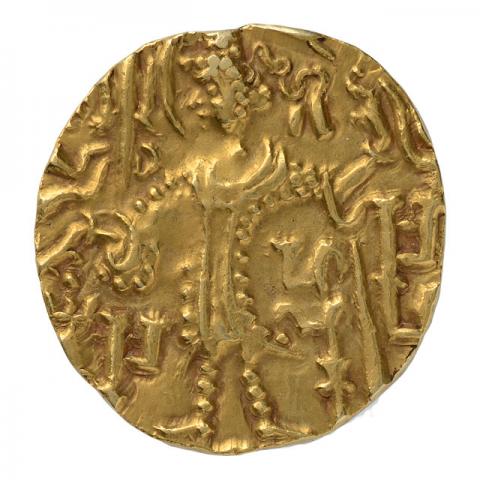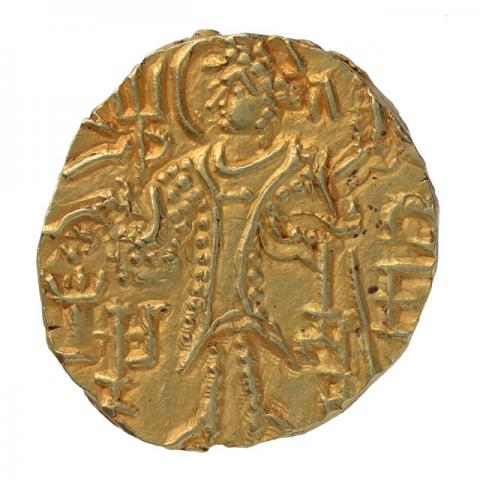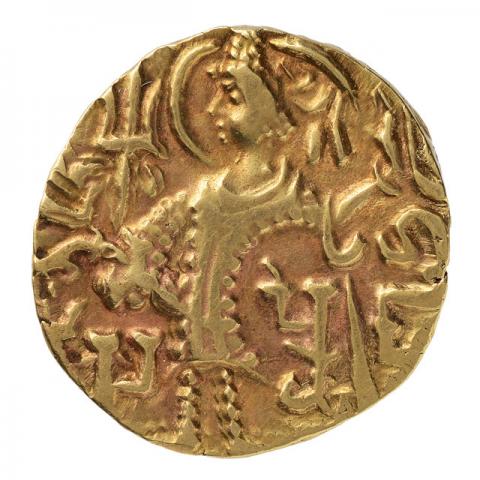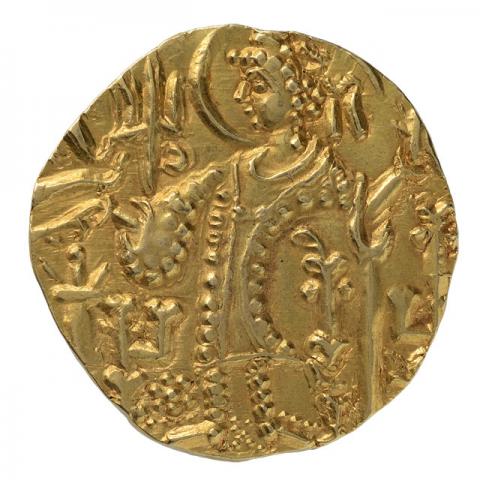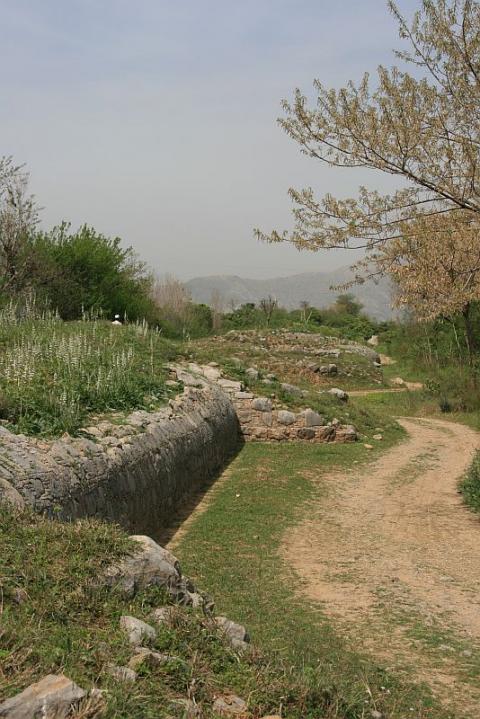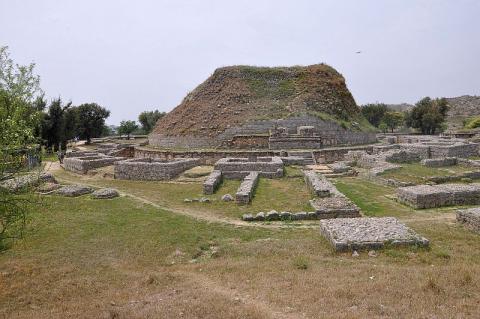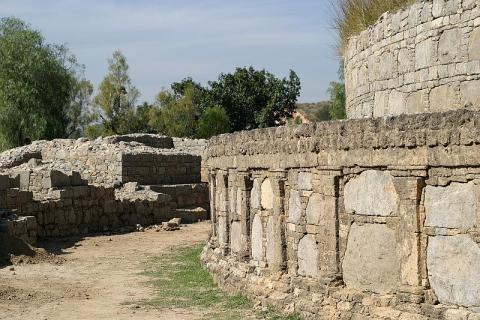
At the end of the 4th century CE the Kidarites overtook the region around Taxila, located east of the Indus River in Punjab (Fig. 5/A), from the last of the ruling Kushan kings (Nos. 1, 2). Here their coinage also followed the traditions they found locally, and they struck gold dinar in Kushan style. The last Kushan king to have struck gold coins here was Kipunadha (No. 2). He was followed by the Gupta emperor Samudragupta (around 330–375 CE), who attempted to expand the influence of the strengthening Gupta Empire, with its capital in Pataliputra (Middle India), westward to the Indus (No. 3). He was, however, pushed back by the advancing Kidarites.
Like the Bactrian issues (showcase 3), the obverse of the Kidarite gold dinar shows a standing king in Kushan dress offering at an altar (Nos. 4–9). His head is surrounded by a halo as a sign of his royal magnificence. The names of the kings (Kirada, Hanaka, Yasada, Perosa and Kidara), written in Brahmi letters as monograms, are placed to the right of the king; in addition various clan names (?) or designation "Kushan" are present. On the reverse, we see the protective and fertility goddess Ardochscho (also a symbol of royal fortune) enthroned with a cornucopia; she is likewise adopted from the Kushan models.
Kidarite dinars, which may have been struck in two mints, circulated in an area stretching from the eastern Punjab across Gandhara and into the valley of the Kabul River. The center of known finds lies in Taxila, where three treasure hoards containing 29 Kidarite gold dinars were found during excavations of the Dharmarajika stupa (Fig. 5/B).
It remains unclear how long the the Kidarites were able to hold this eastern region of their realm. For a time they reigned together with the Alkhan, eventually to be pushed back into Kashmir.
A. City wall of Taxila Sirsukh with semicircular bastions; rectangular complex ca. 1400 x 1000 m. (© Klaus Vondrovec)
Taxila was the most important economic and cultural center in the western Punjab (Pakistan). The area contained three large settlements, the earliest of which can be traced at least back to the 6th century BCE. Taxila Sirsukh, the latest, was founded under the great Kushan dynasty in the 2rd/3rd century CE. The city was surrounded by numerous Buddhist temples and monasteries. Toward the end of the 4th century CE the Kidarites took control over Taxila, the Alkhan replacing them by the middle of the 5th century CE.
B. Three treasure hoards with a total of 29 Kidarite gold dinars have been found during excavations of the Dharmarajika stupa.
When the Chinese pilgrim Xuanzang came to Taxila around 632 CE, little was left of the former glory of the metropolis: "The royal family no longer exists, and the nobility fights for power. [...] Although there are still many monasteries, most are run down and abandoned, and there are hardly any monks."

